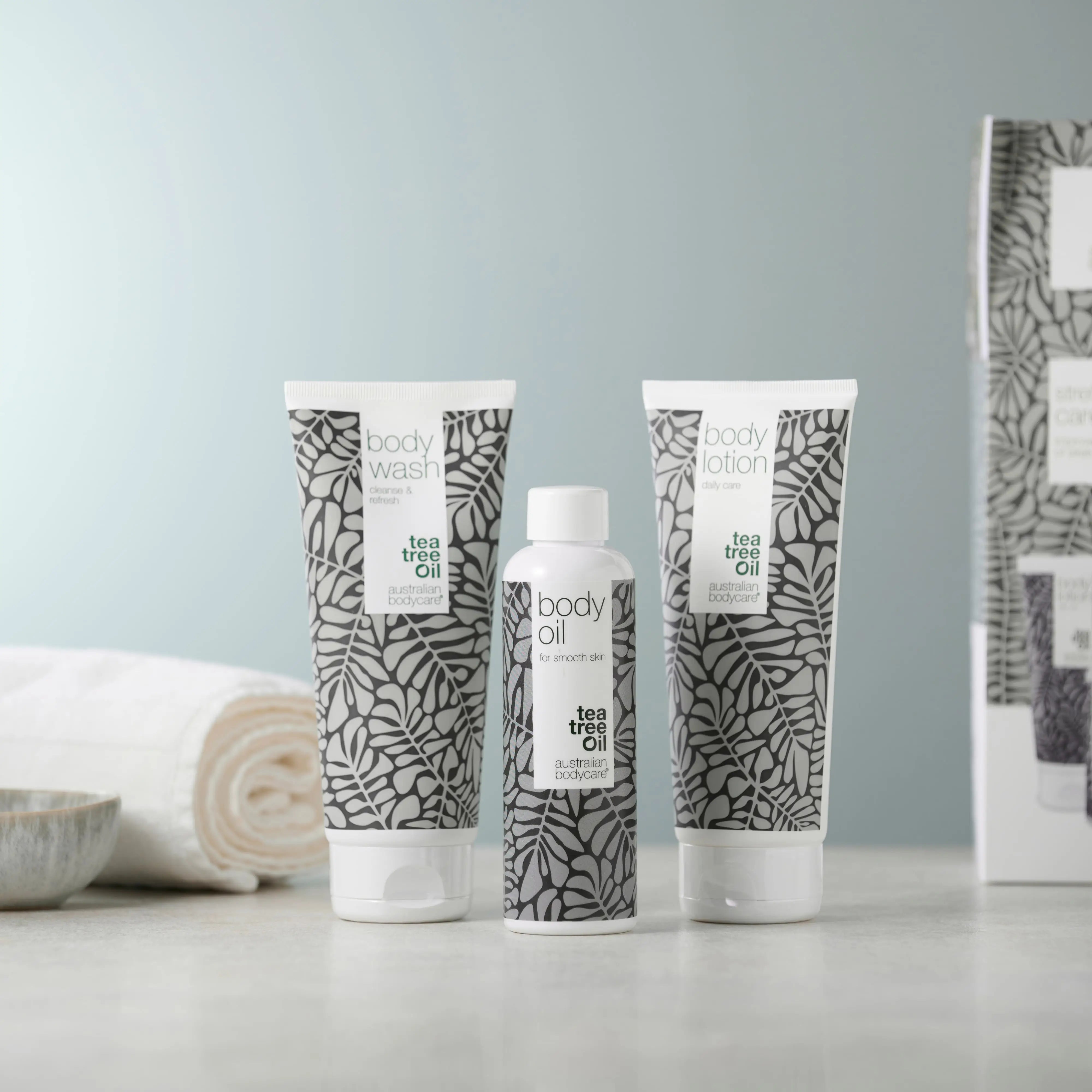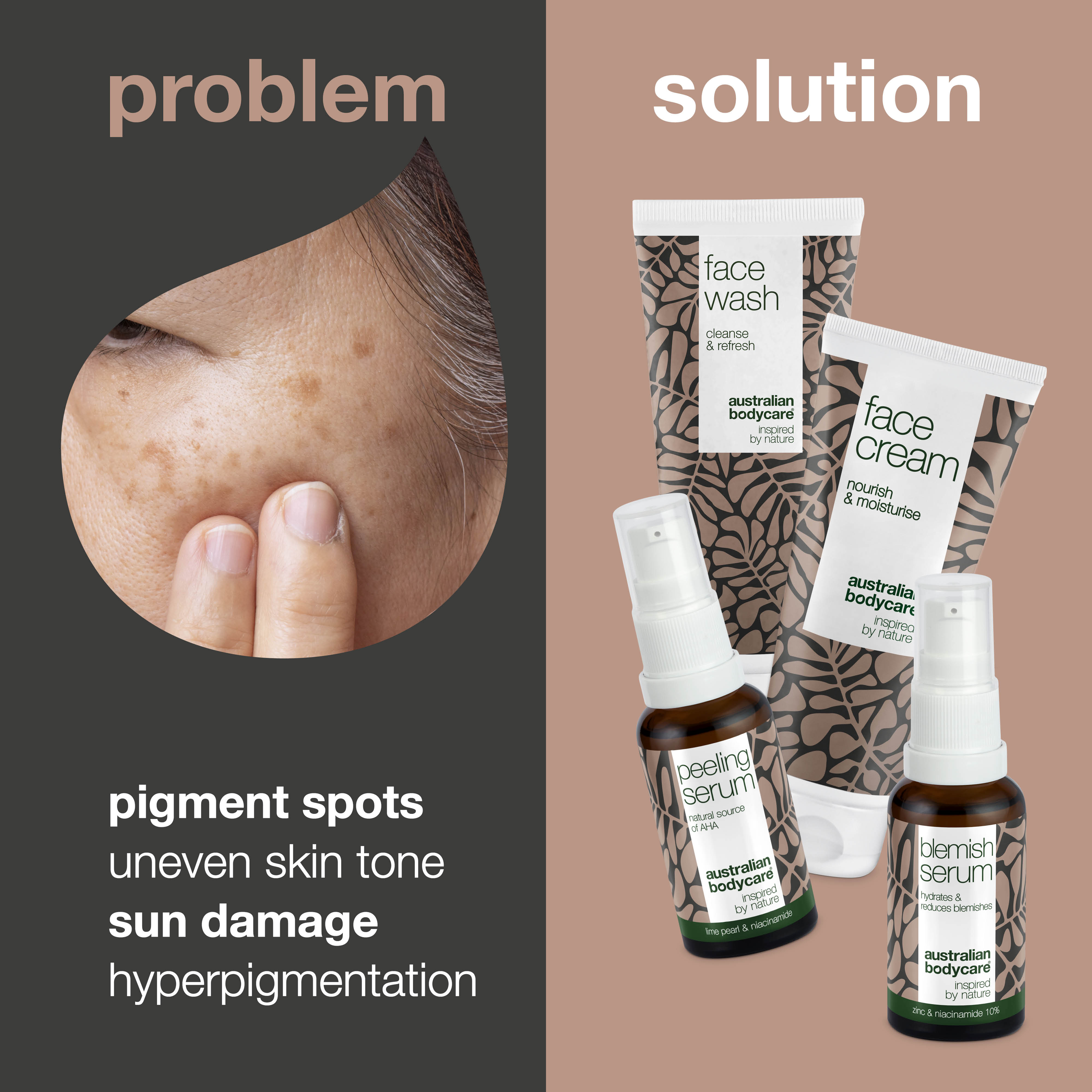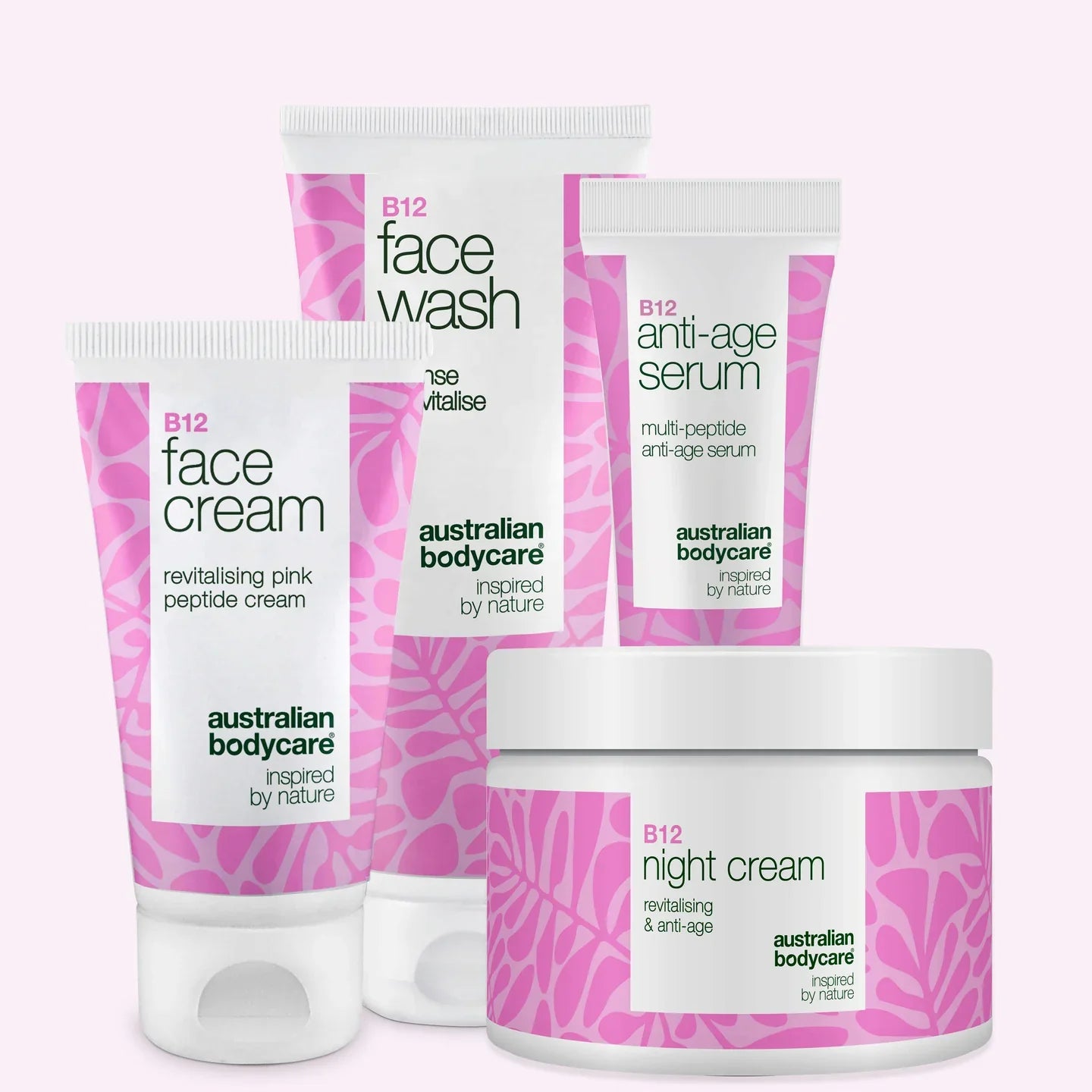Age spots: how to deal with them
Age spots are quite harmless, but they can be very annoying. They often appear on the face, which is most exposed to sunlight, and they often affect women, especially during pregnancy. In this article you can read about what you can do yourself to prevent and treat age spots on your skin.
Table of contents
What are liver spots?
Age spots or liver spots are harmless, so they are a purely cosmetic phenomenon. They turn up on the face or arms, and they appear when a large amount of pigment accumulates in the upper layers of the skin.
This name is somewhat misleading. In fact they have nothing to do with the liver. They appear on skin that has been exposed to a lot of sun without protection, or during major hormonal changes.
Age spots, liver spots – they go by several names
You have probably heard of pigment spots or pigment changes. They are all the same thing, simply referred to by different names. The Latin name for these brown spots on the skin is solar lentigines.
Pregnant women may tend to get liver spots, which are due to the major hormonal changes they are undergoing. When the familiar spots appear on the face or other parts of the body during pregnancy, they are frequently referred to as melasma.
What do age spots look like?
Age spots are brown marks on the skin that are very similar to freckles. They are dark patches of discoloration on limited areas of skin, and they can occasionally merge into large blotches.
The spots are flat and uniform in colour, and cannot be felt on the skin. They can be up to 3-4 cm in diameter, but are not painful and do not itch.
Brown and slightly darkened age spots are formed by the skin’s natural pigment, melanin, and they are not a sign that anything is wrong, either with you or your skin.
Age spots can be confused with malignant birthmarks – so if you are in doubt, it is always best to have them checked by your doctor.
Why do people get age spots?
If age spots appear on your skin, there is a completely natural explanation.
They may be caused by hormonal changes, for example during pregnancy or if you take medication or contraceptives, but the most frequent cause is exposure of the skin to a sufficient amount of sunlight.
The great majority of men and women will therefore have numerous age spots on their skin by the late 40s. Many have these spots even earlier.
Why do age spots appear when the skin is exposed to sunlight?
If the sun burns your skin and you do not protect it with sun cream, the pigment cells in the skin are affected.
Over time, pigment accumulates in the upper layer of skin, and when the skin and its cells are working extra hard, they begin to produce extra large quantities of melanin (pigment).
And then the whole process starts, with age spots turning up on your skin.
Who is usually affected by age spots?
Both men and women get age spots as they grow older. In fact you need not be much older than 30 or 40, before your skin has been exposed to enough sunlight to begin to form age spots.
Typically, the first spots appear on the arms, the backs of the hands, and on the face. Men are often affected by harmless age spots on the crown of the head.
Why do more women get age spots than men?
Women have a greater tendency to get age spots.
The reason is that these spots in the skin also appear during hormonal changes, such as during pregnancy or use of contraceptive pills, which affect the hormone balance.
Preventing age spots – what is the best way to protect your skin?
By far the most effective way to avoid age spots is to protect your skin from the sun. The earlier in life you begin, the better it will work.
It is always wise to protect your skin from the sun and follow the usual advice about sun protection:
- Make sure you always put on sun cream.
- Wear a sun hat to protect the skin on your face.
- Stay in the shade as far as possible when the sun is intense around midday.
- Cover your skin with clothing.
How can I remove and treat age spots?
If the damage is done, and you have age spots, but want to make them less visible, there are several ways you can relieve the problem on your skin.
Good skin care with cream or oil for age spots
A mild and gentle way to reduce brown spots on your skin is by means of good, nourishing skin care.
In Australian Bodycare’s pack for pigmentation you get four products that reduce the visibility of brown spots. You cannot remove the spots completely, but your skin tone is noticeably improved with regular use.
The effective ingredients help to even and improve your skin tone, and at the same time your skin is nourished and moisturised as you care for it with Tea Tree Oil, natural AHA peel and Niacinamide.
How to use the products:
- If you use make-up, remove it first. Then cleanse your skin with face wash. Massage it into wet skin, and do not forget your neck and the upper part of your chest. Rinse off thoroughly and pat the skin dry.
- Apply a couple of drops of Niacinamide Serum to the cleansed skin on your face, neck and upper chest. The serum penetrates rapidly into the skin and acts on the deeper layers.
- Protect your skin and give it moisture with face cream. Face cream can be used as both day and night cream. The cream is economical to use: a little goes a long way.
Use the products twice a day for the best effect. Note that it is quite normal if the skin ‘cleans out’ during the first two weeks, and you may risk outbreaks of spots in the first couple of weeks after changing products. It will stabilise and improve after a month's consistent use of the products.
1-3 evenings a week, use Peeling Serum like this:
After cleansing your face, pat the skin dry. Then spread a couple of drops of Peeling Serum on your face – and perhaps on your neck and chest too, if you also have pigment changes there.
Do not wash Peeling Serum off, but leave it on the skin. Leave it to work for 30 minutes, then apply a couple of drops of Niacinamide Serum. Massage it in and finish off with a protective layer of face cream.
You should only use Peeling Serum a few times a week. For some people once a week will be enough, while others may benefit from using it three times a week. Try it out, and find the frequency that suits you and your skin best.
If you have brown speckles on your skin and want a more even and uniform skin tone, you will need to be patient.
Your skin will not change overnight, but if you work at it patiently, you will get good results. It may take from 12 to 20 weeks before the pigment oil produces visible results on your skin.
Other ways to remove age spots
There are other methods you can resort to if you are really unhappy about your age spots:
- Freezing (cryosurgery)
- Laser
- Lightening
If you are considering freezing or laser treatment, your own doctor is the person to see. However, you are well advised to try a good body oil first. Lightening is only a temporary solution, and both laser treatment and freezing can leave you with a pale spot instead of a brown age spot.
Where do age spots typically appear?
In principle, you can get age spots anywhere. They appear primarily, however, on the parts of the body that are most exposed to the sun’s rays in your lifetime.
Age spots on the face
The face is probably the place where the risk of getting age spots is greatest. When you spend time outdoors in the sunshine, you will practically always get sun on your face.
So take care always to put sun cream on your face when the sun is shining outside, and of course, avoid sunburn at all times.
Age spots on the hands
Your hands are also exposed to lots of sunlight, as they are rarely covered up. Especially the backs of the hands are affected, so that is often where age spots appear.
Do not forget your hands, therefore, when you spread sun cream all over your body.
Age spots on the arms
Do you like going out in a short-sleeved T-shirt, weather permitting? Most people do.
Your arms are also exposed to a lot of sunshine in the warmest months, and many people get age spots, particularly on their underarms.
Age spots on the legs
The legs are also an exposed area if you like to drop long trousers and hop into shorts in warm weather.
So many people know all about age spots on the legs.
Age spots on the crown of the head
As the years advance, men develop age spots on the crown of the head, especially if they have lost nearly all their hair.
The top of the head is directly exposed to the sun’s rays, so that is another place where important to remember sun cream.





